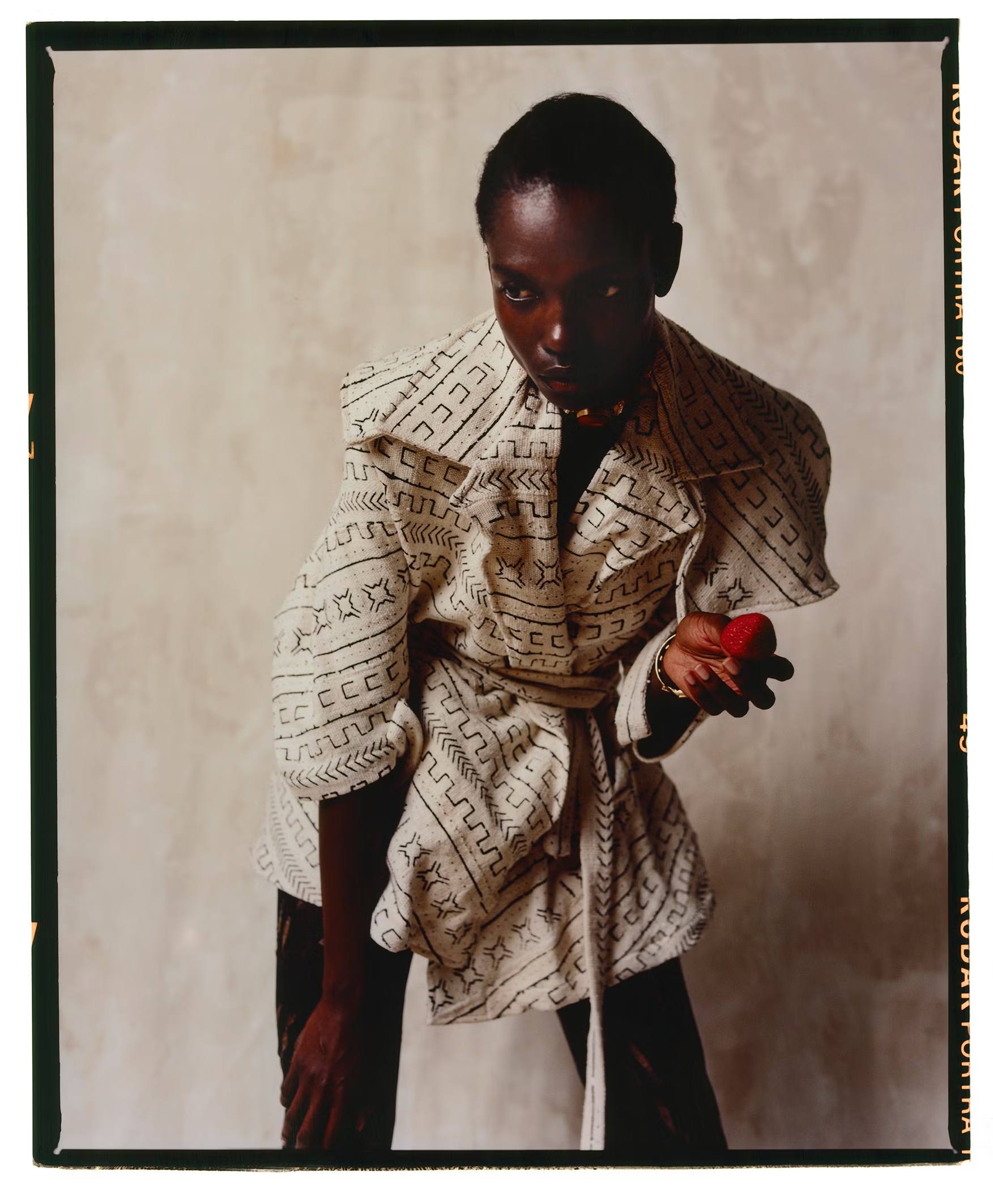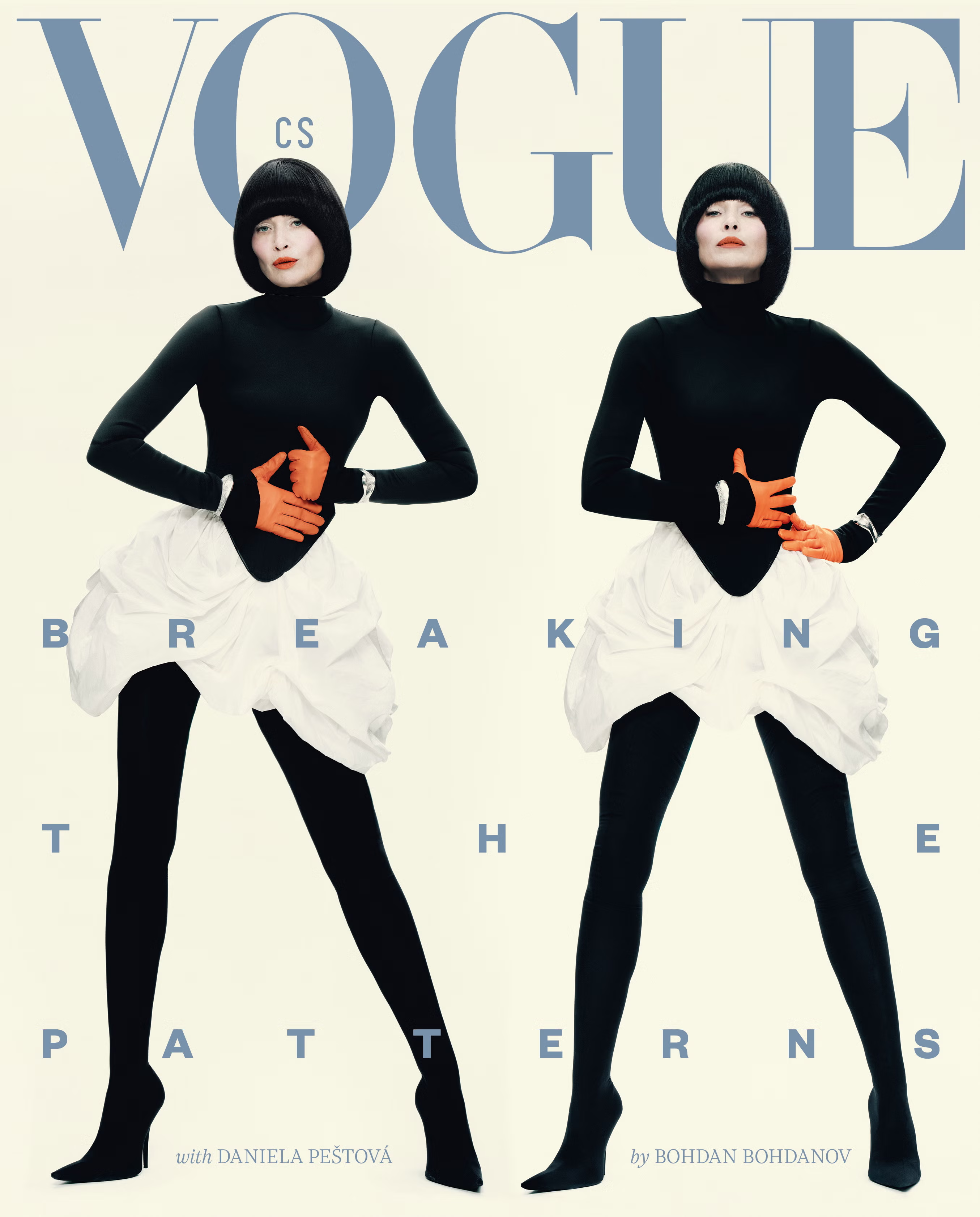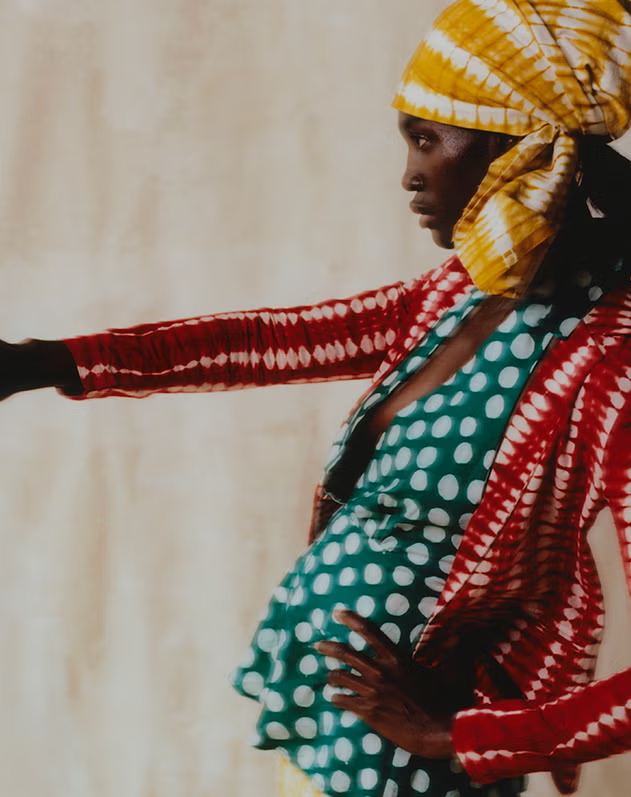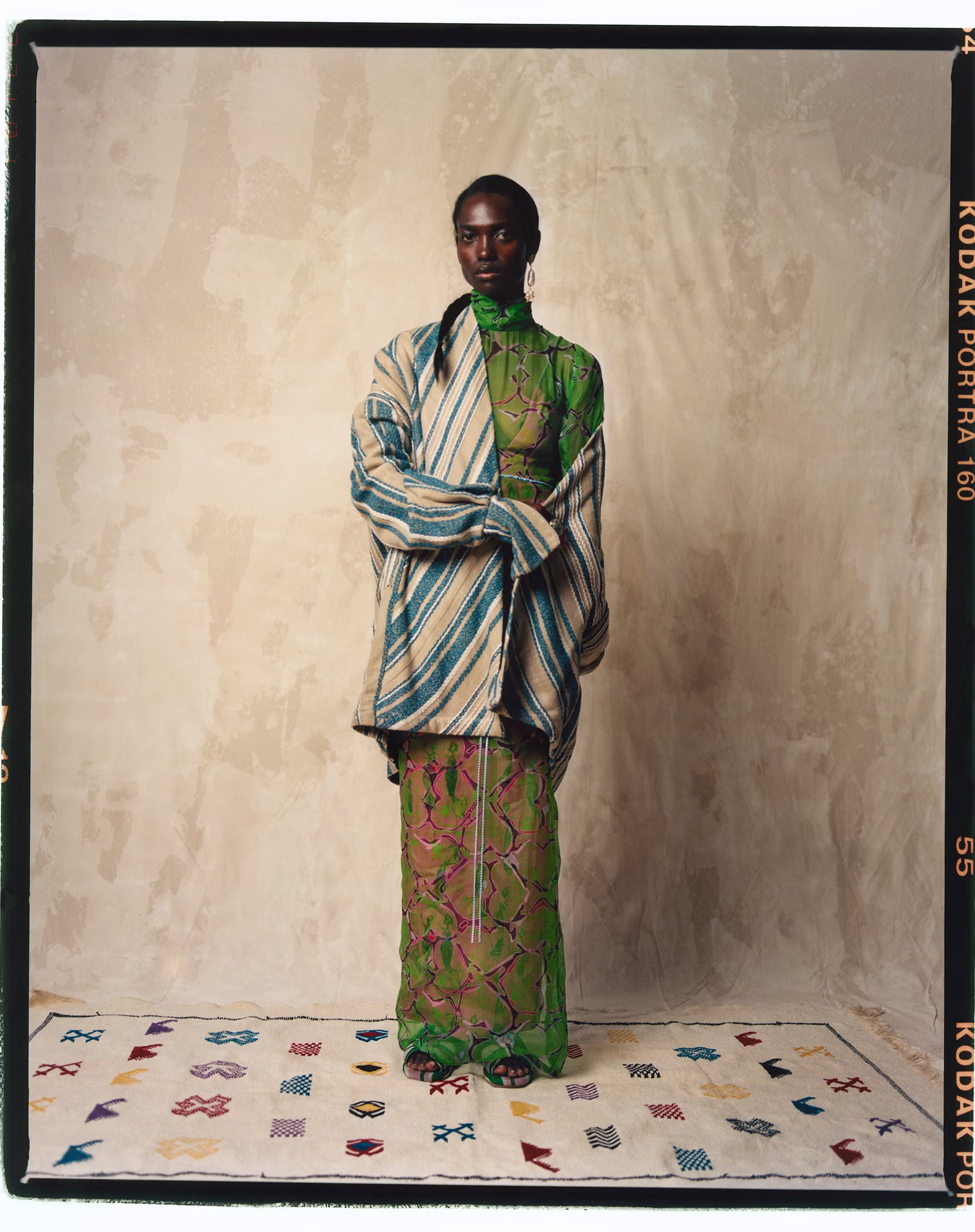Vogue CS in English

Interview with Abrima Erwiah of Studio 189
Ooooota Adepo1. 8. 2020

Foto: Rhys Frampton
Blazer; Studio 189; pants, Lisa Folawiyo; shoes, Jimmy Choo; choker, bracelet, all Sonia Petroff.
Ooooota: When did you first realize you wanted to work in fashion and luxury?
Abrima: I am from Ghana and Côte d’Ivoire on my father’s side and on my mother’s side I am from the US. My mother’s family is from Mississippi and several generations ago, my family was enslaved. My family moved to Pittsburgh during the Great Migration and eventually my mother, Betty Sims moved to New York. Her younger sister, Naomi Sims followed a few years later and tried to become a model. The modeling agencies would not take her because they said that she was too dark and African looking. So she got a photographer in 1967 to take her picture which landed the cover of Sunday Times Style. Finally, in 1969, she landed the cover of Life Magazine spearheading the ‘Black is Beautiful’ movement at the height of The Civil Rights Movement in America. She then went on to become known as the first Black supermodel, working with people like Peter Beard, Irving Penn, Andy Warhol, and countless publications. I learned from an early age the power of fashion and beauty and how it can be used as a medium for social change. I knew that I had a fond appreciation of fashion and luxury from a young age.
Ooooota: Where does the name Studio 189 come from?
Abrima: I worked for various luxury companies and at a certain point in my career, I wanted to start working with other creatives to build towards positive change and function like a studio. I had moved into the neighborhood near where Rosario [Dawson] grew up. I called it Studio 189 because my building number was 189. I also realized the importance of numbers. They have meaning and I am still discovering all the ways that the numbers 1, 8, 9 affect our journey in growing the brand.
Ooooota: Describe the selection process of the artisans who create for Studio 189. How involved are they in manufacturing the clothing and metalwork?
Abrima: A few years ago, we started with a couple of artisans. Over time we partnered with the United Nations International Trade Center Ethical Fashion Initiative to help support marginalized communities and help build an African fashion industry. We hired a local team to train staff through a program developed by local consultants and the former CEO of production at Max Mara Group. How do we work with artisans? How do we find them? The answer is we are them. Some of them come to us and ask us to collaborate. Some of them we know through community relationships: churches, NGOs, schools, etc. Some are recruited through community outreach. Some are referred to us by other artisans. The artisans and the team are the heart and soul of this brand.
Ooooota: How does Studio 189 view fashion as a tool for social change?
Abrima: We believe that fashion can be an agent of social change. The fashion industry contributes 10% of global CO2 emissions and is contributing to the negative effects of climate change. It is critical to design with circularity in mind and to consider the effects of everything that we buy and make on the planet. Fashion is a multi-trillion-dollar industry that employs mostly women, particularly in the informal sector. There are so many social issues tied to the purchase of a garment. Every time the consumer shops, they are voting for what type of world they want to live in. Behind every product you purchase is a supply chain that goes all the way back to the farmer. Fashion impacts the environment, countless amounts of people, and contributes to the growth of economies, which contributes to the social welfare of people.
Ooooota: Why is it important for Studio 189 to focus on production in Africa?
Abrima: Africa is the heartbeat. It is where we all come from. So many natural resources have so often been extracted to add value elsewhere. The result is that many people live in unfair and impoverished conditions, often times put in a position to beg for assistance. Imagine instead if we devoted time to building infrastructure, investing in people, investing in adding value to resource. We could build an economy driven by fashion that is bigger than aid.
There is so much beauty coming from Africa. We work mostly in Ghana and within West Africa where the creativity, talent and skillset of the people we work with are incredible. Crafts have been passed down from generation to generation, infused with new innovative approaches.
So many brands produce items, but they do not know who is making their clothes. Often times you find that their supply chain leads back to countries in Africa. We love the idea of re-empowering the people that are working to contribute to the supply chain and working together to build a better tomorrow.
Ooooota: Is it more meaningful to sell African designs to the world or African designs to Africans in Africa?
Abrima: Does it matter? Gucci sells in Italy and also sells globally. We are a global and local community comprised of people that have been moved around over a long period of time. It’s about honoring and preserving tradition while celebrating where we are now, being conscious of where we are going. It’s about celebrating our similarities and our differences. Africa is a continent that is made up of many countries and whose diaspora extends all over the world. What is meaningful is that we have the opportunity to grow together, build together, rise together and be able to tell our own stories and create a fairer and unified world where everyone is included and has the chance to live well.

Abrima Erwiah
Ooooota: How easy or difficult is it to be a sustainable brand producing in Africa?
Abrima: Building a brand is challenging. Trying to make it sustainable is not easy and trying to do the work within Africa is not easy for infrastructure reasons. We have many challenges that have only been exacerbated with COVID-19. However, it is possible to do. And it gets better every day, so we know that over time, we will get there.
Ooooota: How do you see the African fashion industry evolving?
Abrima: I think the African fashion industry is at a nascent stage but it is evolving. There are more and more brands entering the marketplace and we are all collectively making an effort to build infrastructure to support the growth of the system. I think over time you will see more high-quality production from local brands and foreign brands being done within Africa. I think you will start to see a consumer develop (and this consumer is already developing) who is interested in supporting brands from Africa and its diaspora. Overall, I just believe there will be a well-developed industry with education systems etc same as you find in various other regions, continents and countries that have a more advanced fashion system.
Ooooota: Is it important for African designers to play by the rules of the Euro-American fashion industry, disrupt them, or come up with an entirely different set of rules to suit their needs and their audience?
Abrima: Disrupt them. Frankly, I think it’s important for all brands everywhere to disrupt the traditional fashion system. Change is needed everywhere. And this presents a unique opportunity for brands that are made in Africa.
Ooooota: What can we look forward to seeing with Studio 189?
Abrima: We are presenting a new collection during New York Fashion Week in September 2020. We are working on a voting campaign that will launch soon in the US to encourage voter registration and turnout. We have launched an initiative with African brands called Made in Africa. We are working on several special collaborations which will launch hopefully in 2021.



